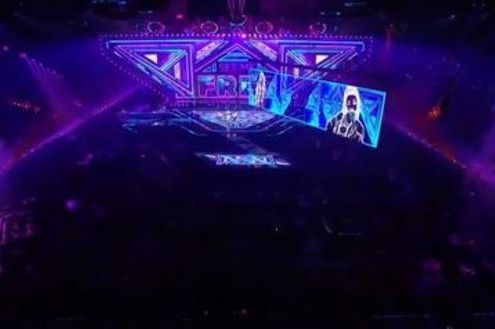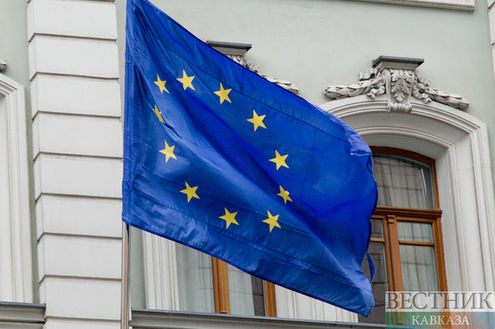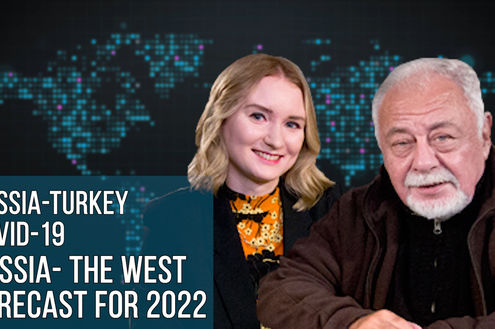Many different events have taken place in the history of Russo-Iranian relations, both positive and negative. However, the parties have always sensed and been aware of each other's significance.
Economic facts
Russian-Iranian work in the sphere of nuclear energy is the most well-known area of mutual cooperation. It consists of the completion of the Bushehr nuclear power plant. This cooperation is exclusively peaceful by its nature as the currently constructed reactor is not intended for plutonium production. In addition, IAEA guarantees have already covered the Bushehr nuclear power plant, and the IRI has already undertaken to return the nuclear fuel irradiated there to Russia (see Chapter 2).
The construction of the Bushehr nuclear power plant, carried out by Atomstroyexport, is a significant contract. Its current cost is $1.3 billion. Three hundred Russian enterprises are involved in this contract, which created about 20 thousand jobs. In addition, Russia is ready to supply the reactor with nuclear fuel for its lifetime.
In October 2007, Russia and Iran came to agreement about changes in the contract on the nuclear power plant’s construction. These changes provide for the project funding until the energy startup stage and fix the date of the block’s preliminary formal launch. It was to take place in August 2010 (now the date has been moved to September). From December 2007 to January 2008 nuclear fuel needed for the first run was supplied. In all, 8 lots making up about 82 tons were delivered. In addition, the mounting of circular pumps has been completed, and equipment for the maintenance of the necessary meteorological conditions has been implemented and commissioning of the automated technological process control system is being completed. 700 Iranian experts (Bushehr nuclear power plant future personnel) have been trained in Russia during the past four years.
It is planned that within one year after the Bushehr nuclear power plant startup there will be established a Russian-Iranian enterprise joint with Atomstroiexport. Its establishment was not provided for by the contract and was initiated by the Russian party due to Iranian experts’ lack of experience. The company's staff will make up about 900 people.
Despite pressure from the West, the Russian-Iranian military and technical cooperation continued until recent time. For example, in 2006, 29 anti-aircraft missile systems Tor M-1 were installed for Iran. Their cost was $780 million. In 2007, Tehran received 3 Su-25UBT. In addition Iranian naval yards repair diesel submarines 877EKM and have modernized 30 front bombers Su-24MK. At the same time there has been signed a medium-range automotive missile system 2K12 "Square" modernization contract. The contract also provides for their re-equipment with modern surface-to-air guided missiles 9M317E. The total volume of supplies to Iran during this period can be estimated at $1.2 billion. At the same time a contract over supply of the five medium and long-range missile system S-300 PMU-1 batteries signed a few years ago has not yet been implemented due to political reasons.
In connection with resolution 1929 adopted on June 9, 2010 by the UN Security Council, Russia's chances for the maintenance of military and technical cooperation with Iran are extremely limited. It is likely that the cooperation will be almost completely curtailed, except for the implementation of the previously signed contracts.
It should be noticed that cooperation between Moscow and Tehran continues in the spheres of advanced technology products as well as oil and natural gas production and transportation, railway construction within the bounds of the "North-South” project, providing for creation of a transport corridor from the Russian-Finnish border to the Iranian port of Bandar-e Abbas in the Persian Gulf, as well as in the sphere of the raw materials, provisions supply and light industry products’ supply. Altogether, trade turnover volume between the two countries reached $3.7 billion in 2008 (in comparison with 2007, turnover has increased by 12%). Export from Russia to Iran has exceeded $3.3 billion and imports reached $401 million. In 2008, ferrous materials and metalware made up 63% of the Russian exports to Iran, cars, equipment and vehicles - 14% ; wood and cellulose and paper products - 7%, wheat - 5%.. Imports from Iran mainly consist of consumer goods and provisions, making up 55% of the imports, as well as cars and equipment (30%).
Trade and economic relations between the countries are built in compliance with the Agreement between the Government of the Russian Federation and the Government of the Islamic Republic of Iran on trade and economic cooperation as of April 14, 1997, as well as the Treaty on the foundations of relations and principles of cooperation between Russia and the Islamic Republic of Iran as of March 12, 2001.
At the same time, the share of Russian imports to Iran in 2008 made up no more than 6% of the total volume of imports to Iran. The share of EU import made up 22%, Chinese 15%, the United Arab Emirates - 12%. In turn, the Iranian import to Russia made up just 0.2% of Russian imports.
Investment cooperation remains the weak point of Russian-Iranian interaction. Nowadays its volume makes up less than 1% of turnover. In 2007, the cost of investment flows between Russia and Iran made up just 1.9 million and the volume of accumulated mutual investments amounted to $177 million. At the same time, Russian organizations and companies generally invest in the Iranian economy directly. And, according to 2007 data, Iranian investments accumulated in Russia made up $896,000.
Russian-Iranian cooperation in the space sphere continues. For example, in 2002, Rosoboronexport signed a contract with the Institute of the Applied Research of Iran on spacecraft Sina-1 manufacturing and launches into orbit, as well as on the supply of equipment for an earth station and models of the spacecraft. In October 2005 at the Plesetsk Cosmodrome, the Iranian Sina-1 spacecraft was launched. In January 2005, Roscosmos and Aviaexport signed a deal with the Telecommunication company and the Telecommunication infrastructure of Iran on the creation and launch of the geostationary satellite communication system Zohreh.
However, Russian-Iranian cooperation in the space sphere was not continued, because Tehran headed for cooperation with Beijing in order to create an independent space industry. Consequently, Iran has developed the Environment-1 satellite together with China and Thailand. It was launched in September 2008 by a Chinese rocket. Nevertheless, in January 2008 within the terms of a previously signed contract, the earth satellite control station Sina-1 was delivered to Iran.
In August 2007, at the international airshow MAKS-2007, Russian leasing company Ilyushin Finance Co. and the Iranian airline, Iran Air Tour, signed a $200 million contract on selling five Tu-204-100s to the Iranian company. The supply was to be started in 2009. In February 2009, a delegation the United Aircraft Corporation, headed by its president Alexei Fyodorov, was in Iran. In the course of the negotiations an interest in the implementation of a “cooperation program” for the supply and joint manufacturing of Tu-214, Tu-204 and Tu-334 airliners in Iran for 10 years was confirmed. In the course of the negotiations support was also expressed for cooperation between OPK Oboronprom and the organization of aviation industry of Iran on the project of joint development and manufacturing of Ka-32-based civil helicopters.
The future of the abovementioned Russo-Iranian contract in the aviation industry sphere is now rather questionable. Some Iranian officials link them to the implementation of the contract on the supply of anti-aircraft missile systems of medium and long-range S-300 PMU-1 to Iran. In addition, the ongoing improvement of US-Russian relations creates a negative background for cooperation between Russia and Iran in the economic sphere. Difficulties in relations between Russia and Iran in the sphere are confirmed by the fact that on August 16, 2009 the supply of used Russian aircraft in the capacity of lease in Iran was prohibited. It is possible that cooperation will still remain limited to the supply of two Russian Mi-17V-5 transport versions in April 2010 for the Ministry of Energy of Iran.
In December 2009, a trilateral meeting of task groups representing the railways of Iran, Russia and Azerbaijan on the construction of a joint railway Rasht - Astara (Iran) - Astara (Azerbaijan) took place. The railway will be 175 km long. 168 km of the 175 km will be constructed in Iranian territory. Previously, several joint meetings were held in order to remove obstacle to the establishment of the joint company for construction of the railway as a part of the international transport corridor "North - South".
In February 2009, the president of Russian Railways Vladimir Yakunin took part in a formal ceremony in honor of the beginning of the electrification works on the railway line Tabriz – Azarshahr, which is 46 km long. In compliance with the contract, signed in March 2008 with the IRI railways, the electrification of the section will be implemented by the Russian Railways company. After the implementation of this contract, the Russian company may take part in the electrification of the railway line Teregan-Mashhad, which is 800 km long.
In October 2008 the second session of the Russo-Iranian task group on transport was held in Tehran. The two parties showed readiness to sign the Addendum to the Agreement on air communications. At the session, the IRI representatives suggested conducting regular meetings of the coordination centre on the "North-South" transport corridor issue.
The Russian Ministry of Education provides state grants for the admission of Iranian citizens to Russian universities on a regular basis, in order to support Iran in training Iranian specialists. In 2008-2009, 20 government scholarships were allocated to Iranian citizens.
Cooperation is developing between regions of the Russian Federation and Iranian cities and provinces. Moscow, St. Petersburg, Tatarstan, Mordovia, Astrakhan, Volgograd, Nizhny Novgorod and the Omsk region have been the most active participants in this process.
A permanent Russo-Iranian commission on trade and economic cooperation has been established in order to tackle issues of trade and economic cooperation between the two countries. From January 2006 to the end of 2007, the Russian co-chairman of the Commission was a former head of the Rosatom State Nuclear Energy Corporation, Sergei Kiriyenko. In February 2009, Russian Energy Minister Sergei Shmatko was appointed co-chairman of the commission by a governmental decree. The Commission’s Iranian co-chairman is the Iranian Foreign Minister Manouchehr Mottaki.
An example of successful economic cooperation can be seen in the completion by Gazprom of development phases 2 and 3 of the "South Pars" gas-condensate field as a part of an international consortium, and is now carrying out a mutual settlement of accounts with the Iranian side concerning repayment of funds invested in the project. The project’s costs amounted to around $ 2 billion, with Russian companies share in this enterprise makes up about 30%. Gazprom is building underground gas storage facilities in Iran and developing the country’s general gas distribution network layout, as well as participating in construction and maintenance of the national gas network. Gazprom is now negotiating with the Iranian government over the supply of natural gas to northern Iran, corresponding with the equivalent network scheme. Such schemes have already been implemented in relation to Russian and Kazakh oil.
In August 2008, the Russian company "Gazprom Neft" submitted a report on the results of a field study into the "North Azadegan" oil field, for the consideration of the IRI Government. Negotiations are currently being held with the Iranian National Oil Company on joint development of the field . In addition, "Gazprom Neft" has suggested the Iranian authorities start development of the “South Azadegan” oil field.
Cooperation between Russia, Iran and Qatar in the sphere of gas transportation and production of liquefied gas is turning out significantly worse. In 2008, the management of Gazprom conducted a series of meetings. However, agreement was only reached on establishing a technical committee of the three countries’ experts. This committee was established for consideration of joint gas projects, gas marketing and development of the corresponding market. According to some data, the project’s realization is being hampered by the Iranian side, which is insisting on establishment of a facility for natural gas liquefaction on its own territory.
The Russian company Tatneft has established a joint Russo-Iranian enterprise "Pars Tatneft" (with equal shares in capital) for carrying out work in the sphere of oil and gas and the petrochemical industry in the IRI. The company has already carried out its geophysical study commitments in the "Mond” oil deposit area. Another joint enterprise of "Tatneft" and the Islamic organization “Foundation for the Disadvantaged” is continuing to function, for example, in oil refining from sulphur on Kharg Island.
The Russian company Megafon provides international roaming services for the Mobile Company of Iran, an Iranian mobile operator.
In October 2003, the Russian company AutoVAZ and Iranian car industry companies signed a $20 million contract for supply of car spare parts from Iran to Russia. The contract is now in the process of being implemented. In addition, Samand and Peugeot 206 cars have been being delivered from Iran to Russia since 2005. Negotiations are ongoing with the Iranian company “Iran Khodro Diesel” on supply of 5000 "Sobol" cars to the IRI as part of a programme for city public transport renewal. The Russian “GAZ” group is also active in the Iranian market, supplying 1500 "Gazel" minibuses to Iran in 2007-2008.
In 2005, KAMAZ signed a license agreement with Rakhsh Khodro Diesel Co. on KAMAZ truck assembly in Tabriz. 330 KAMAZ trucks have already been being delivered to Iran since 2005. In May 2007 a KAMAZ assembly line was officially launched there. In July 2008 a second truck assembly line came into operation. 1700 “KAMAZ” truck assembly sets are expected to be supplied to Iran annually, and Iran has become the largest export market for KAMAZ outside the former Soviet Union.
The issue of establishing an organization of the world's leading manufacturers and exporters of natural gas, a so-called “gas OPEC“, deserves separate consideration. Having expressed interest in its establishment, Moscow did not support Iran’s tough proposals for the organization’s regulations and suggested that natural gas costs and gas transportation routes be adjusted exclusively. The disagreement over this issue is caused by the fact that Iran is seeking to settle purely political problems. At the same time, Iran, possessing enormous gas deposits, exports relatively insignificant amounts of natural gas. Russia is the leading supplier of natural gas to Europe and builds its relations with the EU on the basis of long-term contracts at prices linked to world prices. Therefore, Russia is not going to change its export scheme or harmonize selling prices of natural gas with other cartel members. Moreover, a natural gas market as such still does not exist, due to the extreme insignificance of exports of liquefied gas and its relatively high cost.
Currently, the Gas Exporting Countries Forum (GECF) is still being formed. Algeria, Egypt, Qatar, Libya and Russia have already ratified the agreement on establishment of the GECF, unlike the IRI. The duties of the organization’s Secretary General are currently being temporarily carried out by the Energy Minister of Qatar. At a GECF meeting in July 2009, the structure of the organization and its working bodies were approved, as well as its initial budget. So far, it has been decided to allocate only $2 million for the organization’s development. This sum will be spent on staff salaries, formation of a technical database and office equipment. Qatar has promised to provide premises for the secretariat free of charge.
Thus, despite some progress, all in all modern Russo-Iranian economic relations remain weak. Prospects for future economic cooperation between the two countries are vague, because the UN Security Council, the United States and several other prominent countries have already imposed sanctions upon the IRI. They are all hampered by the fact that Moscow and Tehran, as prominent exporters of hydrocarbons, may become direct competitors, particularly in the European market. In addition, Russian companies linked to the US market and financial organizations are doing their best to limit their activities in Iran, because they do not want to fall under U.S. sanctions, even despite the substantial reduction in competition on the Iranian market caused by the major Western companies’ withdrawal.
The de facto blocking of Tehran’s entry into the Shanghai Cooperation Organization as a full member provides evidence of the fact that Russo-Iranian relations are rather complicated. Apparently, the reason is that Moscow does not want to create additional difficulties hampering the organization’s development, which could be caused by any confrontation between Iran and a number of leading Western countries.
The Kremlin is also uneasy about the fact that an additional pipeline branch from Turkmenistan to Iran, capable of transporting 12 billion m3 of natural gas per year, may be launched in the near future. In this case, exports of Turkmen gas to Iran may grow from 8 to 20 billion cubic meters, making it possible to transport it to Europe through Turkey. This activity is carried out within the framework of a corresponding agreement between the National Iranian Gas Export Company and a Turkish company specialising in the same sphere, in compliance with which the Turkish authorities undertook to obtain the necessary license for the yearly transportation of 35 billion m3 of Iranian gas. It is presumed that Turkmen gas will be used only in the first stage of the project. Later, export supplies will be carried out using Iranian gas through the planned “Pars” (Persian) pipeline. Moreover, transportation of natural gas is planned at the Iranian-Turkish border crossing in Bazargane. The participation of the Iranian side in the "Nabucco" project is a possible alternative. Implementation of these two projects will inevitably cause a conflict of interests between Moscow and Tehran on the European gas market.
Vladimir Evseev. Exclusive for VK
Russian-Iranian alert partnership( Part 2)

5005 views





